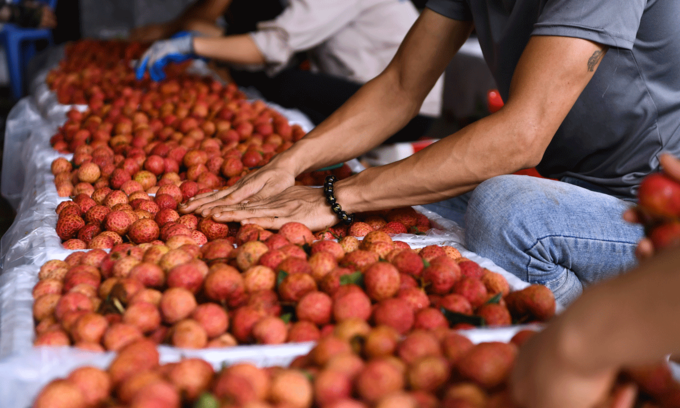
Vietnam’s fruit exports to China are falling after the latter made quality and origin standards more stringent, insiders from both countries said at a conference.
Demand for high-quality fruits is rising in China, but the government has raised the bar for packaging and origin, Xu Zhi of the Long Wu fruit and vegetable wholesale market in Shanghai said at the online conference attended by executives from 40 Vietnamese and Chinese companies on Thursday.
So his market has been imposing higher requirements for imported fruits, he said.
These higher standards and the impact of the Covid-19 pandemic on border trade resulted in Vietnam’s fruits and vegetables exports to China falling by over 25 percent year-on-year in the first eight months of this year to $1.31 billion, according to Vietnam Customs.
Quality is an issue for Vietnamese produce. Yuan Ya Xiang, general secretary of the Shanghai Fruit Business Association, said there had been occasions when importers found fruits from Vietnam containing harmful bacteria.
Besides, despite Vietnam’s range of fruits and proximity to China, its fruits are less competitive than those from other markets due to high labor and transport costs, he said.
Vietnam needs to improve quality control and lower costs to be more competitive in exporting to China, he added.
Industry insiders too admitted major improvements were needed to scale and quality for Vietnamese fruit exports to become more competitive.
Dang Phuc Nguyen, general secretary of the Vietnam Fruit and Vegetables Association, said exporters need to have at least 10 hectares of orchards meeting VietGAP (Vietnamese good agriculture practices) standards to be able to export to China without concerns about quality.
But many businesses operate on a small scale and have poor packaging practices, he added.
Vietnam exports nine kinds of fruits to China through formal channels, dragonfruit, watermelon, lychee, longan, banana, mango, jackfruit, rambutan, and mangosteen.
China is the largest market for Vietnamese agricultural, forestry and seafood products, accounting for 27.8 percent of their exports of almost $8.5 billion last year, according to Vietnam Customs.




Related Posts